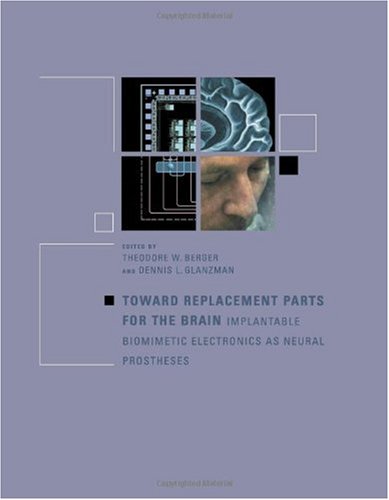Theodore W. Berger, Dennis L. Glanzman0262025779, 9780262025775, 9781423726555
The continuing development of implantable neural prostheses signals a new era in bioengineering and neuroscience research. This collection of essays outlines current advances in research on the intracranial implantation of devices that can communicate with the brain in order to restore sensory, motor, or cognitive functions. The contributors explore the creation of biologically realistic mathematical models of brain function, the production of microchips that incorporate those models, and the integration of microchip and brain function through neuron-silicon interfaces. Recent developments in understanding the computational and cognitive properties of the brain and rapid advances in biomedical and computer engineering both contribute to this cutting-edge research.The book first examines the development of sensory system prostheses – cochlear, retinal, and visual implants – as the best foundation for considering the extension of neural prostheses to the central brain region. The book then turns to the complexity of neural representations, offering, among other approaches to the topic, one of the few existing theoretical frameworks for modeling the hierarchical organization of neural systems. Next, it examines the challenges of designing and controlling the interface between neurons and silicon, considering the necessity for bidirectional communication and for multiyear duration of the implant. Finally, the book looks at hardware implementations and explores possible ways to achieve the complexity of neural function in hardware, including the use of VLSI and photonic technologies. | |







Reviews
There are no reviews yet.